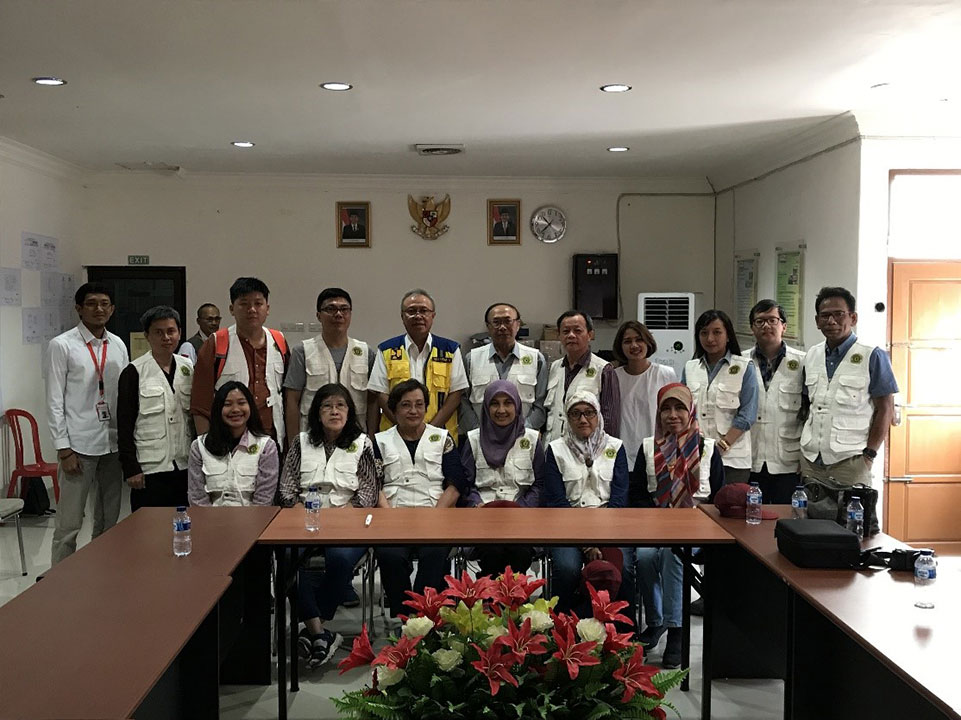PALU-DONGGALA-SIGI EARTHQUAKE AND LIQUEFACTION STUDY
Research Team : Prof. Paulus P. Rahardjo, Ph.D., Budijanto Widjaja Ph.D., Dr. Rinda Karlinasari, Dr. Gouw Tjie Liong, Dr. Nathan Madutujuh, Aswin Lim, Ph.D., Dr. Eddy Triyanto, Anthony Gunawan, Ph.D., Ir. Anastasia Sri Lestari, MT., Ir. Siska Rustiani, MT., Ir. Rudy Febrijanto, MT., Prieschila Christine Tamsir, ST., MT., Kirana Rongsadi, ST., MT., Ridson Leonard, ST., Ir. Desiana Vidayanti, MT., Ir. Kirman, MT., Ir. Andy, Ratih Novianti, Nabila Qolbi Aulia, Oki Setiawan, Muhammad Iqbal
Year : 2018 – 2019
Abstract : The Palu-Donggala earthquake on September 28, 2018, caused severe damage and high fatalities, and at the time this research was conducted, grief still surrounded both the communities directly and indirectly affected. This earthquake exhibited a complete range of phenomena, including fault movement, tsunami, landslides, and a massive liquefaction event—possibly one of the largest ever recorded in the world. In particular, the liquefaction phenomenon attracted significant attention both in Indonesia and globally, as the mudflow generated during liquefaction devastated infrastructure and residential areas on a massive scale, shocking the public at large, especially those who directly experienced or witnessed the event.
In addition to being a natural disaster that is destructive and has tremendous impacts on human life and property, earthquakes can also be regarded as full-scale natural laboratories, offering opportunities to study earthquake characteristics for the purpose of improving disaster mitigation in the future. Civil engineering professionals, in particular, have a fundamental connection to earthquake disasters, as most regions in Indonesia are situated in earthquake-prone zones.
The city of Palu and its surrounding areas, based on topographic, geological, and seismological conditions, are highly vulnerable to earthquake damage, including secondary hazards such as tsunamis, liquefaction, and slope failures. Prior to the 2018 event, several destructive earthquakes had already struck the Palu region, causing significant fatalities. One example is the earthquake on May 20, 1938, with a magnitude of 7.6, whose tremors were felt throughout the island of Sulawesi.
Studying, analyzing, and estimating all contributing factors and the vast potential hazards highlight the urgent need to mobilize all components of society—including the academic community—to contribute ideas, recommendations, and concrete actions so that people may be better prepared, both physically and psychologically, before, during, and after earthquake disasters to reduce their impacts.
The recent Palu-Donggala earthquake of September 28, 2018, has provided invaluable lessons for professionals, especially in civil engineering, as it demonstrated the complete spectrum of earthquake impacts—from ground rupture, tsunami, and landslides to the most devastating event, flow liquefaction, which destroyed residential areas and vital infrastructure essential for sustaining human life, the economy, and the foundation of a decent society.



